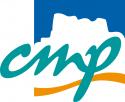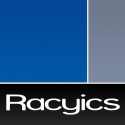UB09 Session 9
Date: Thursday 22 March 2018
Time: 10:00 - 12:00
Location / Room: Booth 1, Exhibition Area
| Label | Presentation Title Authors |
|---|---|
| UB09.1 | CCF: A CGRA COMPILATION FRAMEWORK Authors: Shail Dave and Aviral Shrivastava, Arizona State University, US Abstract Coarse-grained reconfigurable array (CGRA) can efficiently accelerate even non-parallel loops. Although scores of techniques have been developed in the past decade to map loops on CGRA PEs, several challenges in enabling acceleration of general-purpose applications on CGRAs remained unresolved, in particular, the automatic code generation for the CGRA accelerator coupled with modern processor cores. In this demonstration, we showcase CCF - CGRA compiler framework. CCF is implemented in LLVM 4.0 and includes a set of transformation and analysis passes. We show that given performance-critical loops annotated in embedded applications, how CCF extracts the loop, constructs the data dependency graph (DDG), maps it onto CGRA architecture, off-loads necessary configuration instructions for CGRA PEs, and automatically communicates data between the CPU and CGRA. More information ... |
| UB09.2 | TOPOLINANO & MAGCAD: A DESIGN AND SIMULATION FRAMEWORK FOR THE EXPLORATION OF EMERGING TECHNOLOGIES Authors: Umberto Garlando and Fabrizio Riente, Politecnico di Torino, IT Abstract We developed a design framework that enables the exploration and analysis of emerging beyond-CMOS technologies. It is composed of two powerful tools: ToPoliNano and MagCAD. Different technologies are supported, and new ones could be added thanks to their modular structure. ToPoliNano starts from a VHDL description of a circuit and performs the place&route following the technological constraints. The resulting circuit can be simulated both at logical or physical level. MagCAD is a layout editor where the user can design custom circuits, by placing basic elements of the selected technology. The tool can extract a VHDL netlist based on compact models of placed elements derived from experiments or physical simulations. Circuits can be verified with standard VHDL simulators. The design workflow will be demonstrated at the U-booth to show how those tools could be a valuable help in the studying and development of emerging technologies and to obtain feedbacks from the scientific community. More information ... |
| UB09.3 | CONSTRAINED RANDOM APPLICATION GENERATION FOR FIRMWARE-BASED POWER MANAGEMENT VALIDATION Authors: Vladimir Herdt1, Hoang M. Le1, Daniel Große2 and Rolf Drechsler2 1University of Bremen, DE; 2University of Bremen, DFKI GmbH, DE Abstract Efficient power management (PM) is very important for modern SoCs. To handle the every rising complexity of embedded system design, power aware virtual prototypes (VPs) are employed to enable an early power analysis. Most modern SoCs implement the PM strategy in firmware (FW) due to ease of development. Validation of these strategies at VP level is crucial as undetected flaws will propagate. However, existing validation approaches are based on engineered software (SW), which might miss rare corner cases. We propose a demonstrator based on a novel approach to assess the power-versus-performance trade-off of FW-based PM. Instead of executing real SW applications, our approach makes use of workload scenarios described by a set of constraints to automatically generate SW with a specific power consumption profile. The main novelty is the modeling of scenarios based on constrained random techniques that are very successful in the area of SoC/HW functional validation. More information ... |
| UB09.4 | POWER-AWARE SOFTWARE MAPPING OF PARALLEL APPLICATIONS ONTO HETEROGENEOUS MPSOCS Authors: Gereon Onnebrink and Rainer Leupers, RWTH Aachen University, DE Abstract Heterogeneous multi- and many-processor systems-on-chip provide the best trade-off between performance, cost, and power. One of the biggest hurdles to exploit multicore architectures from the SW side. Considering an application that has been properly partitioned into multiple concurrent tasks, and programmed in a parallel language, the process of mapping those tasks onto the processors with optimal DVFS is a huge challenge for a certain design goal. An automatic approach is needed that determines the optimal decision. A great amount of research has been conducted aiming to optimise the performance of a parallelised application. Another research track is the ESL power estimation methodology. Combining both, a novel power-aware software mapping heuristic has been implemented to develop performance and power co-optimized parallel software. This algorithm can be used to identify the gain of sophisticated power management techniques by providing the power-performance trade-off. More information ... |
| UB09.5 | VIRTUAL PROTOTYPE MAKANI: ANALYZING THE USAGE OF POWER MANAGEMENT TECHNIQUES AND EXTRA-FUNCTIONAL PROPERTIES BY USING VIRTUAL PROTOTYPING Author: Sören Schreiner, OFFIS – Institute for Information Technology, DE Abstract My Phd work consists of analyzing the correct usage of power management techniques, as well as the analysis of extra-functional properties, including power and timing properties, in MPSoCs. Especially in safety-critical environments the power management gets safety-critical too, since it is able to influence the overall system behavior. To demonstrate my methodologies a mixed-critical multi-rotor system and its corresponding virtual prototype is used. The multi-rotor system's avionics is served by a Xilinx Zynq 7000 MPSoC. The hardware architecture includes ARM and MicroBlaze cores, a NoC for communication and peripherals. The MPSoC processes the flight algorithms with triple modular redundancy and a mission-critical video processing task. The virtual prototype consists of a virtual platform and an environmental model. The virtual platform is equipped with my measuring tool libraries to generate traces of the observed power management techniques and the extra-functional properties. More information ... |
| UB09.6 | WARE: WEARABLE ELECTRONICS DIRECTIONAL AUGMENTED REALITY Authors: Gabriele Miorandi1, Walter Vendraminetto2, Federico Fraccaroli3, Davide Quaglia1 and Gianluca Benedetti4 1University of Verona, IT; 2EDALab Srl, IT; 3Wagoo LLC, IT; 4Wagoo Italia srls, IT Abstract Augmented Reality (AR) currently require large form factors, weight, cost and frequent recharging cycles that reduce usability. Connectivity, image processing, localization, and direction evaluation lead to high processing and power requirements. A multi-antenna system, patented by the industrial partner, enables a new generation of smart eye-wear that elegantly requires less hardware, connectivity, and power to provide AR functionalities. They will allow users to directionally locate nearby radio emitting sources that highlight objects of interest (e.g., people or retail items) by using existing standards like Bluetooth Low Energy, Apple's iBeacon and Google's Eddystone. This booth will report the current level of research addressed by the Computer Science Department of University of Verona, Wagoo LLC, and Wagoo Italia srls. In the presented demo, different objects emit an "I am here" signal and a prototype of the smart glasses shows the information related to the observed object. More information ... |
| UB09.7 | OTPG: SPECIFICATION-BASED CONSTRUCTION OF ONLINE TPGS FOR MICROPROCESSORS Authors: Mikhail Chupilko, Alexander Kamkin and Andrei Tatarnikov, ISP RAS, RU Abstract This work presents an approach to construction of online test program generators (TPGs). The approach is intended to use specifications of ISA presented in nML/mmuSL specification languages. They are processed by a meta-generator to obtain their binary representations supplied with meta information and a test generation core compatible with the target microprocessor. The test generation core is loaded as a binary image into the target microprocessor's memory (for experiments we're using QEMU for MIPS) and produces test cases to be processed (incl. results checking) by an executor. It should be noticed that the meta-generator and the executor are not obligatory run at the same microprocessor (especially, if it is highly incomplete). The final goal of the project is to propose a method of obtaining online TPGs for a wide range of ISAs, and to develop a mature tool implementing this method. More information ... |
| UB09.8 | IIP GENERATORS TO EASE ANALOG IC DESIGN Authors: Benjamin Prautsch, Uwe Eichler and Torsten Reich, Fraunhofer Institute for Integrated Circuits IIS/EAS, DE Abstract Semiconductor technology has shown significant progress over the last decades. Digital EDA (electronic design automation) allowed that this progress could be converted to high-performance digital ICs. Analog components are part of Systems-on-Chip (SoC) too, but analog EDA lags far behind. Therefore, a lot of effort was spent to automate analog IC design. Mayor results are constraint-based layout-aware optimization tools using predefined layout templates or pure automation as well as analog generators containing expert knowledge. While optimization is a holistic top-down approach, generators allow parameterized and fast bottom-up generation of critical schematic and layout parts, pre-planned by experienced designers. With IIP Generators, we follow three use cases to ease analog design: 1) design on higher hierarchy levels, 2) development of hierarchical high-level IIPs, and 3) automated design porting due to highly technology-independent blocks down to 22nm. More information ... |
| UB09.9 | ABSYNTH: A COMPREHENSIVE APPROACH TO FRONT TO BACK ANALOG BLOCK DESIGN AUTOMATION Authors: Abhaya Chandra Kammara S.1, Sidney Pontes-Filho2 and Andreas König2 1ISE, TU Kaiserslautern, DE; 2University of Kaiserslautern, DE Abstract ABSYNTH was first presented in CEBIT 2014 where complete, practical circuit sizing approaches have been shown using meta-heuristics on trusted simulators. This tool was then proven by its use in design of several cells in a research project. Here, we present the extension to our nested optimization approach that creates a symmetric and well matched layout in every step for every instance in the population of the swarm, that is extracted in our flow to provide feedback to the cost function impacting on the population update for more viable and robust circuits. The layout optimization presented in this DEMO works with Cadence Layout design tools. Our initial focus is, motivated by Industry 4.0, IoT, on cells for signal conditioning electronics with reconfigurability and Self-X features.[1] Abhaya C. Kammara, L.Palanichamy, and A. König, "Multi-Objective optimization and visualization for analog automation", Complex. Intell. Syst, Springer, DOI 10.1007/s40747-016-0027-3, 2016 More information ... |
| UB09.10 | EXPERIENCE-BASED AUTOMATION OF ANALOG IC DESIGN Authors: Florian Leber and Juergen Scheible, Reutlingen University, DE Abstract While digital design automation is highly developed, analog design automation still remains behind the demands. Previous circuit synthesis approaches, which are usually based on optimization algorithms, do not satisfy industrial requirements. A promising alternative is given by procedural approaches (also known as "generators"): They (a) emulate experts' decisions, thus (b) make expert knowledge re-usable and (c) can consider all relevant aspects and constraints implicitly. Nowadays, generators are successfully applied in analog layout (Pcells, Pycells). We aim at an entire design flow completely based on procedural automation techniques. This flow will consist of procedures for the generation of schematics and layouts for every typical analog circuit class, such as amplifier, bandgap, filter a.s.o. In our presentation we give an overview on such a design flow and we show an approach for capturing an analog circuit designer's strategy as an executable "expert design plan". More information ... |
| 12:00 | End of session |
| 12:30 | Lunch Break in Großer Saal and Saal 1
On all conference days (Tuesday to Thursday), coffee and tea will be served during the coffee breaks at the below-mentioned times in the exhibition area (Terrace Level of the ICCD). Lunch Breaks (Großer Saal + Saal 1)On all conference days (Tuesday to Thursday), a seated lunch (lunch buffet) will be offered in the rooms "Großer Saal" and "Saal 1" (Saal Level of the ICCD) to fully registered conference delegates only. There will be badge control at the entrance to the lunch break area. Tuesday, March 20, 2018
Wednesday, March 21, 2018
Thursday, March 22, 2018
|











